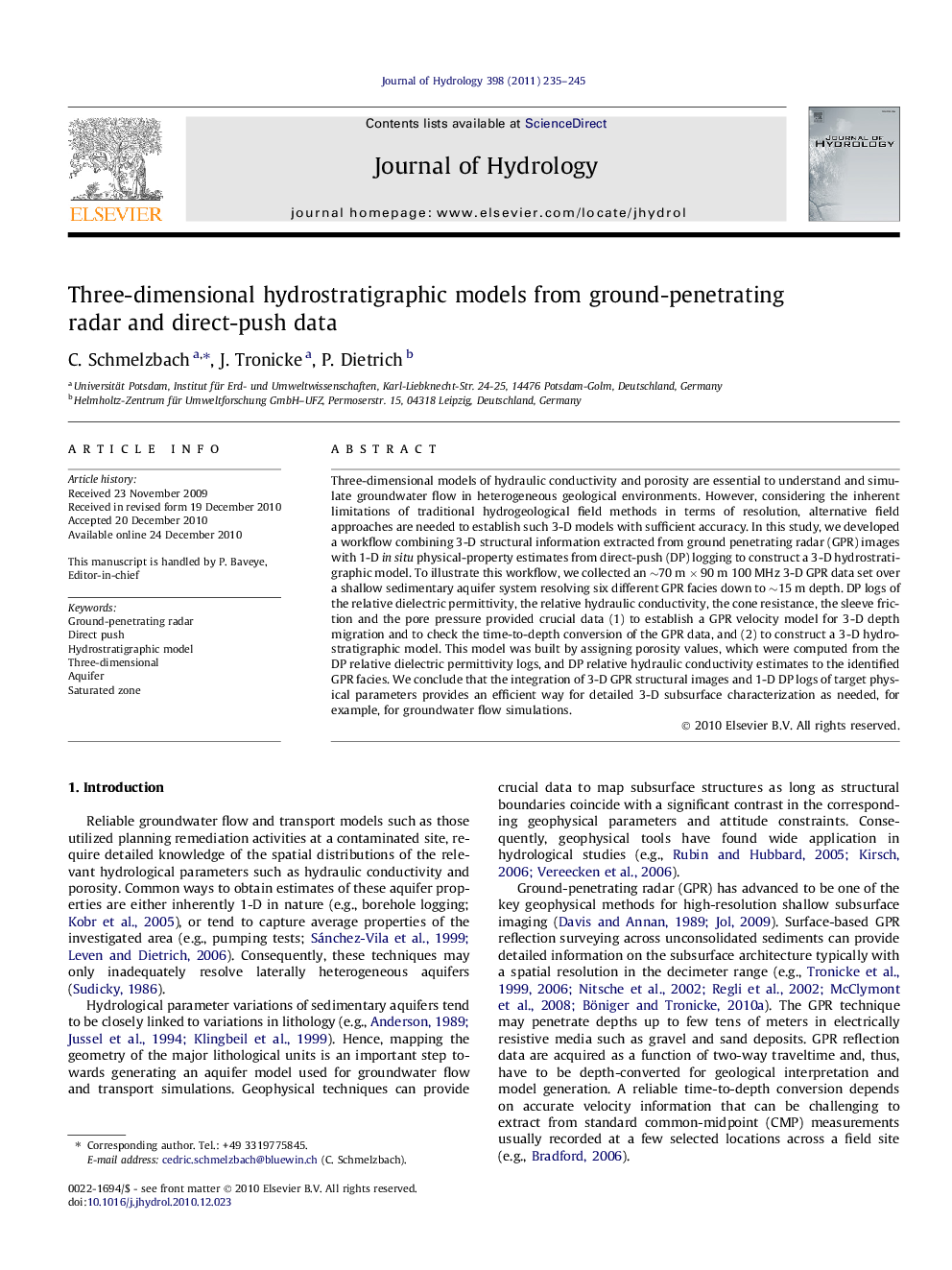| Article ID | Journal | Published Year | Pages | File Type |
|---|---|---|---|---|
| 4577909 | Journal of Hydrology | 2011 | 11 Pages |
Three-dimensional models of hydraulic conductivity and porosity are essential to understand and simulate groundwater flow in heterogeneous geological environments. However, considering the inherent limitations of traditional hydrogeological field methods in terms of resolution, alternative field approaches are needed to establish such 3-D models with sufficient accuracy. In this study, we developed a workflow combining 3-D structural information extracted from ground penetrating radar (GPR) images with 1-D in situ physical-property estimates from direct-push (DP) logging to construct a 3-D hydrostratigraphic model. To illustrate this workflow, we collected an ∼70 m × 90 m 100 MHz 3-D GPR data set over a shallow sedimentary aquifer system resolving six different GPR facies down to ∼15 m depth. DP logs of the relative dielectric permittivity, the relative hydraulic conductivity, the cone resistance, the sleeve friction and the pore pressure provided crucial data (1) to establish a GPR velocity model for 3-D depth migration and to check the time-to-depth conversion of the GPR data, and (2) to construct a 3-D hydrostratigraphic model. This model was built by assigning porosity values, which were computed from the DP relative dielectric permittivity logs, and DP relative hydraulic conductivity estimates to the identified GPR facies. We conclude that the integration of 3-D GPR structural images and 1-D DP logs of target physical parameters provides an efficient way for detailed 3-D subsurface characterization as needed, for example, for groundwater flow simulations.
Graphical abstractFigure optionsDownload full-size imageDownload as PowerPoint slideResearch highlights►A workflow to construct 3-D zonal hydrostratigraphic models is presented. ►3-D structural information is extracted from 3-D ground-penetrating radar images. ►1-D in situ physical parameter estimates are obtained from direct-push logs. ►Integration of the 3-D structural information and 1-D physical parameter data to construct a 3-D zonal hydrostratigraphic model in depth.
